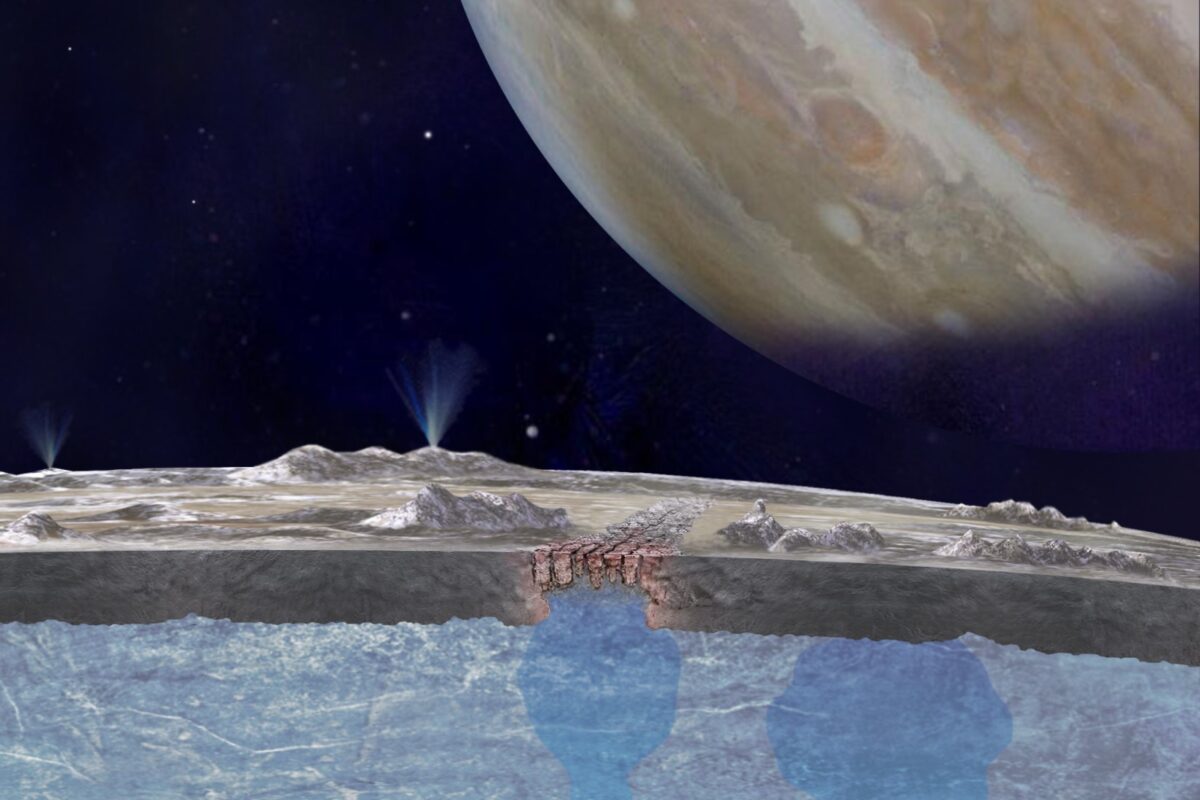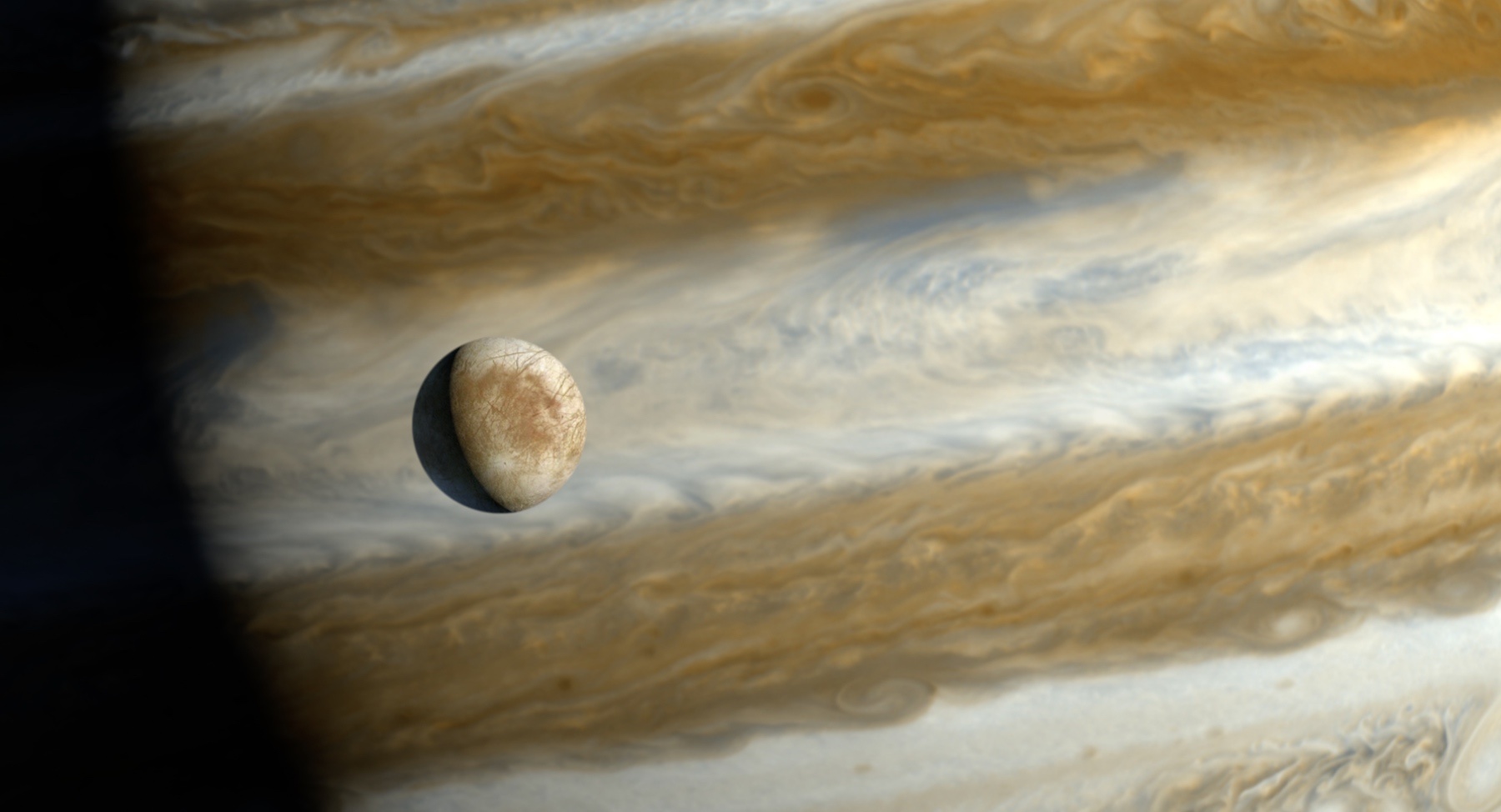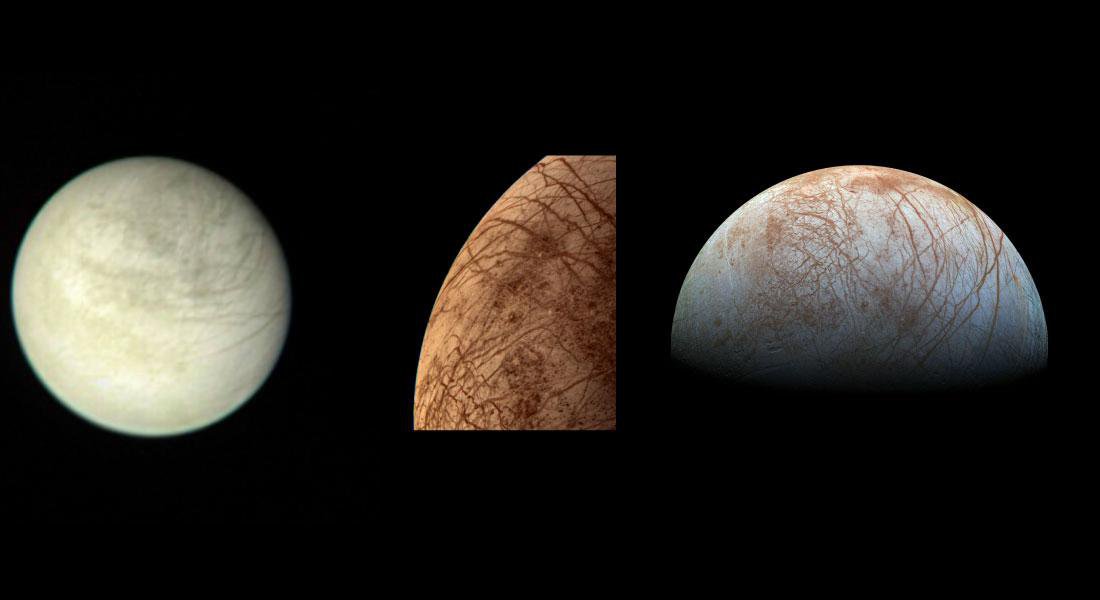Are we alone? Is there life beyond Earth? These are the questions that plague the very essence of science, and in particular, planetary science. Unfortunately, robotic exploration of exoplanetary systems currently remains out of reach due to the literal astronomical distances to get there. For context, our nearest star, Proxima Centauri, is 4.25 light years away, or a mind-blowing 40,208,000,000,000 km (25,000,000,000,000 miles) from Earth. Finding an intelligent civilization might be out of reach for now but searching for any forms of life beyond Earth is very much possible within the confines of our own solar system.
Continue reading “What’s the Right Depth to Search for Life on Icy Worlds?”Shallow Pockets of Water Under the ice on Europa Could Bring Life Close to its Surface

Beneath the surface of Jupiter’s icy moon Europa, there’s an ocean up to 100 km (62 mi) deep that has two to three times the volume of every ocean on Earth combined. Even more exciting is how this ocean is subject to hydrothermal activity, which means it may have all the necessary ingredients for life. Because of this, Europa is considered one of the most likely places for extraterrestrial life (beyond Mars). Hence, mission planners and astrobiologists are eager to send a mission there to study it closer.
Unfortunately, Europa’s icy surface makes the possibility of sampling this ocean rather difficult. According to the two predominant models for Europa’s structure, the ice sheet could be a few hundred meters to several dozen kilometers thick. Luckily, new research by a team from Stanford University has shown that Europa’s icy shell may have an abundance of water pockets inside, as indicated by features on the surface that look remarkably like icy ridges here on Earth.
Continue reading “Shallow Pockets of Water Under the ice on Europa Could Bring Life Close to its Surface”Europa Could be Pulling Oxygen Down Below the Ice to Feed Life

Jupiter’s moon Europa is a prime candidate in the search for life. The frozen moon has a subsurface ocean, and evidence indicates it’s warm, salty, and rich in life-enabling chemistry.
New research shows that the moon is pulling oxygen down below its icy shell, where it could be feeding simple life.
Continue reading “Europa Could be Pulling Oxygen Down Below the Ice to Feed Life”The Europa Clipper is Coming Together, Launching in 2024

Who is excited to send a spacecraft to Europa? Every person I’ve talked to who is even remotely interested in planetary exploration is incredibly enthusiastic about the upcoming Europa Clipper mission to explore Jupiter’s icy moon. With strong evidence of a subsurface liquid ocean, Europa is considered by many to be the most likely place in our Solar System – besides Earth — which might harbor life. The many mysteries about this moon make it a compelling place to explore.
Continue reading “The Europa Clipper is Coming Together, Launching in 2024”Europa Clipper’s Thermal Imaging System was Tested Here on Earth

The highly anticipated Europa Clipper mission, set to launch in 2024, will investigate Jupiter’s moon Europa. This icy moon with a subsurface ocean is considered one of the most enticing places in our Solar System where life might exist. To look beneath Europa’s icy crust, the Clipper mission has a host of instruments looking for plumes and ‘hot spots.’
A thermal emissions imager, called E-THEMIS (Europa Thermal Emission Imaging System) recently passed a major testing hurdle recently by capturing its “first light” images with its infrared camera.
Continue reading “Europa Clipper’s Thermal Imaging System was Tested Here on Earth”If There are Water Plumes on Europa, Here’s how Europa Clipper Will Study Them
NASA’s Europa Clipper is one of the most anticipated missions of the coming decade, in large part because its target, the large Jovian moon Europa, is considered one of the most likely places in our solar system that extraterrestrial life might exist. If Europa is harboring alien microbes, however, they’re likely to be buried deep beneath the moon’s thick icy crust in a vast subsurface ocean. Unlocking the secrets of this water world isn’t going to be easy, but the Clipper team has a plan to make the most of the opportunity they have: If you can’t get to the ocean, let the ocean come to you.
Continue reading “If There are Water Plumes on Europa, Here’s how Europa Clipper Will Study Them”Europa has Water in its Atmosphere

Since the Voyager probes passed through the Jupiter system in 1979, scientists have been intrigued and mystified by its moon Europa. Once the images these probes acquired of the moon’s icy surface returned to Earth, scientists began to speculate about the possibility of a subsurface ocean. Since then, the detection of plume activity and other lines of evidence have bolstered this theory and fed speculation that there could be life beneath Europa’s icy surface.
According to new research, another critical piece of evidence of Europa’s watery nature has at least been confirmed. Using a similar technique that confirmed the presence of atmospheric water vapor in Jupiter’s moon Ganymede, Lorenz Roth of the KTH Royal Institute of Technology confirmed that Europa has water vapor in its atmosphere. This discovery could lead to a greater understanding of Europa’s atmosphere and surface environment, informing missions headed there in the near future.
Continue reading “Europa has Water in its Atmosphere”NASA Chooses Falcon Heavy Over SLS to Launch Europa Clipper, Saving About $2 Billion
The bureaucracy of government control is slowly fading away in space exploration, at least in the US. A series of delays, cost overruns, and imposed requirements have finally started taking its toll on the Space Launch System (SLS), the next generation NASA rocket system. Now, the space agency has finally conceded a point to the commercial launch industry. It has elected to use Space X’s Falcon Heavy to launch one of its upcoming flagship missions – Europa Clipper.
Continue reading “NASA Chooses Falcon Heavy Over SLS to Launch Europa Clipper, Saving About $2 Billion”Micrometeorites Churn up the Surface of Europa. If you Want to Find Life, You’ll Need to dig Down a Meter or So

In the coming decade, NASA and the ESA will be sending two dedicated missions that will explore Jupiter’s moon Europa. These missions are known as the Europa Clipper and the JUpiter ICy moons Explorer (JUICE) missions, which will fulfill a dream that has been decades in the making – searching for possible evidence of life inside Europa. Since the 1970s, astronomers have theorized that this satellite contains a warm-water ocean that could support life.
The case for life in Europa has only been bolstered thanks to multiple flybys and observation campaigns that have been mounted since. According to new research led by the University of Hawaii at Manoa, the best way to look for potential signs of life (aka. biosignatures) would be to analyze small impact craters on Europa’s surface. These patches of exposed subsurface ice could point the way towards life that might exist deeper in the moon’s interior.
Continue reading “Micrometeorites Churn up the Surface of Europa. If you Want to Find Life, You’ll Need to dig Down a Meter or So”There Might be Volcanoes at the Bottom of Europa’s sub-ice Oceans
In about three years, NASA plans to launch a robotic orbiter that will study Jupiter’s mysterious moon Europa. It’s called the Europa Clipper mission, which will spend four years orbiting Europa to learn more about its ice sheet, interior structure, chemical composition, and plume activity. In the process, NASA hopes to find evidence that will help resolve the ongoing debate as to whether or not Europa harbors life in its interior.
Naturally, scientists are especially curious about what the Clipper mission might find, especially in Europa’s interior. According to new research and modeling supported by NASA, it’s possible that volcanic activity occurred on the seafloor in the recent past – which could be happening still. This research is the most detailed and thorough 3D modeling on how internal heat is produced and transferred and what effect this will have on a moon.
Continue reading “There Might be Volcanoes at the Bottom of Europa’s sub-ice Oceans”



